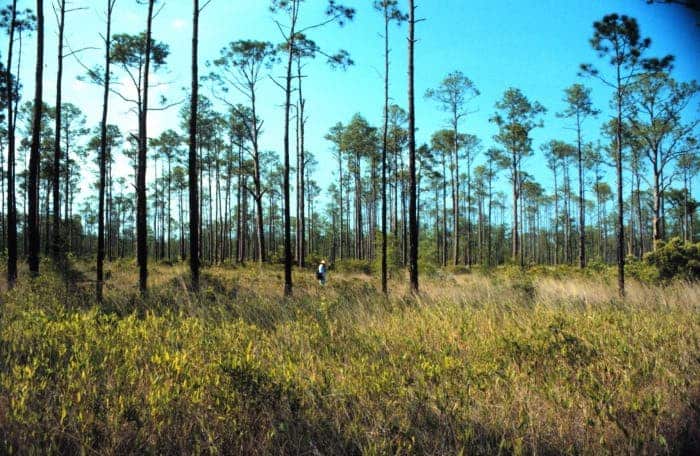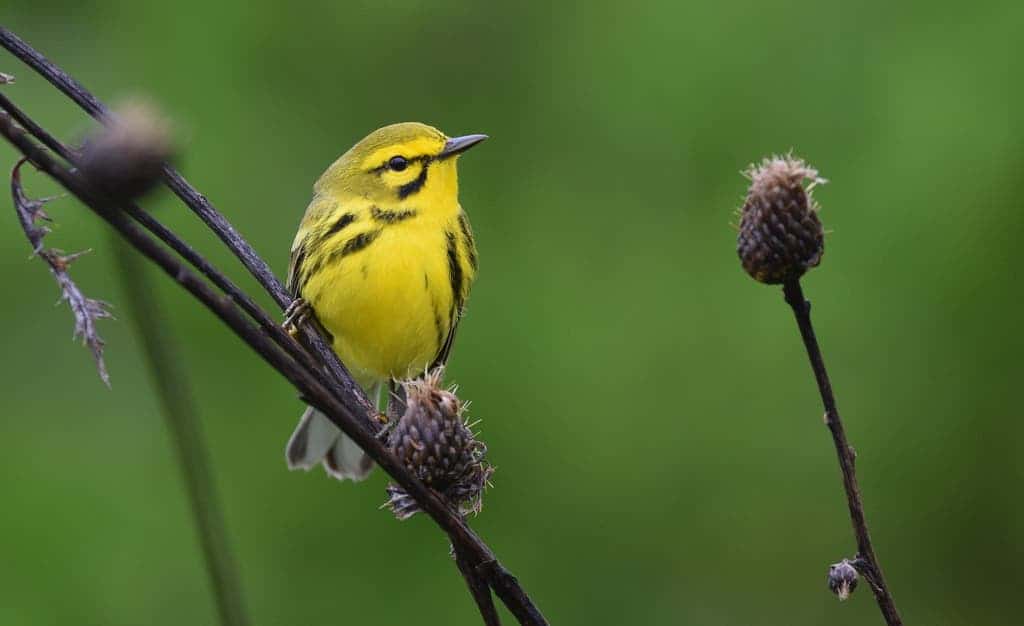Humans have destroyed many natural habitats and the animals that used to live there are suffering. Restoring these habitats is a way to help out its inhabitants, though it can be hard to see if this actually works. Because birds living in Missouri have been in decline, there have been efforts made to restore the forests. A monitoring project alongside the restoration efforts shows that bird survival has gone way up in the restored habitats. These results are published in The Condor: Ornithological Applications.
The typical type of forest in Missouri was pine savanna and woodland areas. The forests were very open with trees dispersed across grasslands. Forest fires in particular were responsible for these habitat types. Native Americans had regularly set fires to promote the resources that supported their livelihoods, such as those for hunting, crops, and warfare. Therefore, there was a mosaic of grasslands and forest, supporting a large amount of biodiversity. However, the Europeans decimated Native populations and started a fire suppression policy upon their arrival.

Habitat restoration involves using the Native technique of fire clearing, with so-called prescribed fires. Additionally, some of the forest strands have thinned. This study, examining restored pine woodland in the Midwest, is unique as previous work has focused on oak savannas in the Midwest and longleaf pine savannas in the eastern US.
Researchers followed the birds’ survival as restoration progressed. Melissa Roach from the University of Missouri and her colleagues looked at the survival of six bird species over two years. Three of them nest in shrubs, the Eastern Towhee, Prairie Warbler, and Yellow-breasted Chat, and three in the canopy, included Eastern Wood-Pewee, Pine Warbler, and Summer Tanager.
“The thought is that the dense shrub layer created by the restoration of pine woodland increases both nest concealment and the number of potential nest sites. This would force predators to search harder and longer for nests; therefore, decreasing the chance of any one nest being found. It’s also likely that predators are taking advantage of an abundance of alternative prey such as small mammals, reptiles, and invertebrates that are supported by the diverse and lush vegetation,” said Melissa Roach to ZME Science.
Before the restoration, predation was the main reason why chicks did not survive. The open forest floor allowed predators to find the chicks easily. Now, forest thinning and fire has created a landscape with multiple vegetation types, changing the dynamics between predators and prey. Shrub and canopy birds have benefitted almost equally. The result is that more animal species are able to coexist in the forest and songbirds are doing better.

“There are multiple big picture implications from this study. The first being that restored pine savanna and woodland is benefitting a variety of bird species, some of which are species of concern, even when bird conservation was not the primary focus of the restoration plan. While our six focal species were common in this study, four are species of conservation concern and some, like Summer Tanagers and Pine Warblers, even have limited reproduction data. Not only were we able to show that these species are responding positively to pine woodland restoration, we provided baseline nest survival data for some understudied species. We hope that land managers can directly apply this information when choosing the type and frequency of restoration treatments, and we also hope that this study increases the public’s awareness and appreciation of just how important prescribed fire and tree thinning can be for wildlife,” said Melissa Roach to ZME Science.
Habitat restoration, if done properly, can really help local species to thrive again.
Journal reference: Roach et al. 2018. Songbird nest success is positively related to restoration of pine-oak savanna and woodland in the Ozark Highlands, Missouri, USA. The Condor: Ornithological Applications.






